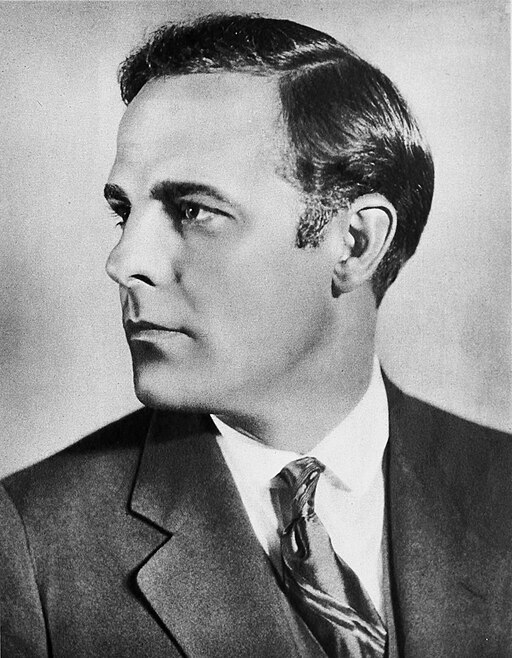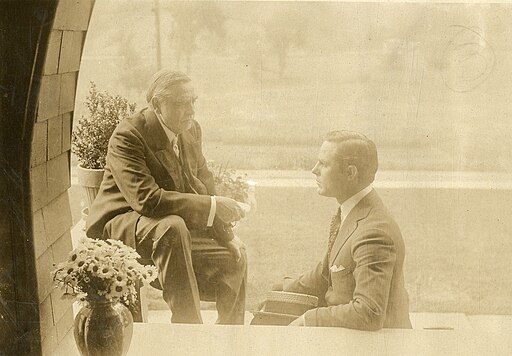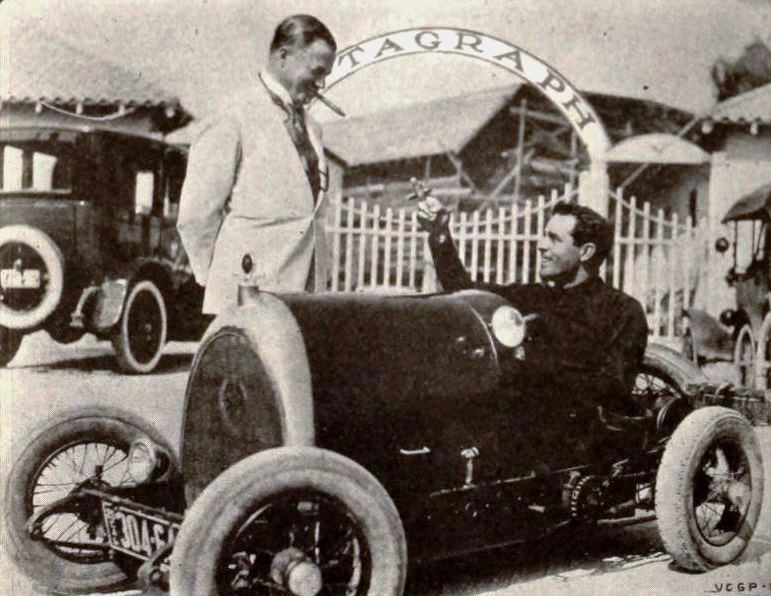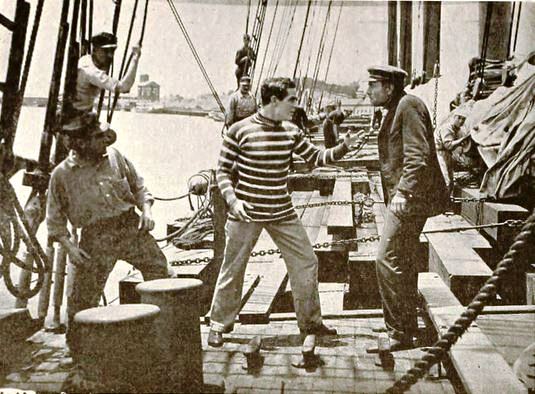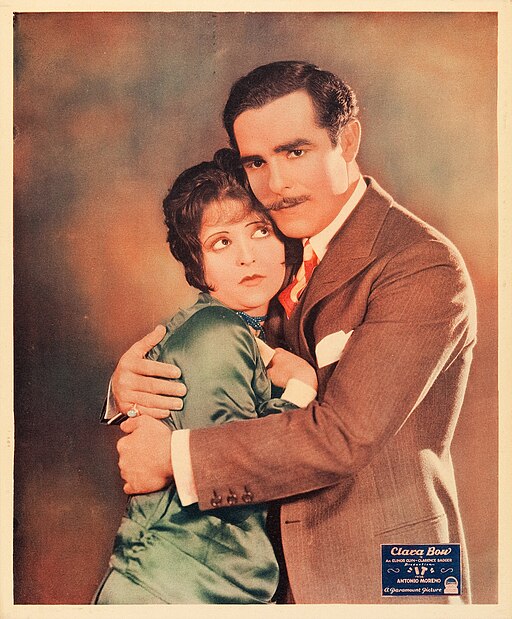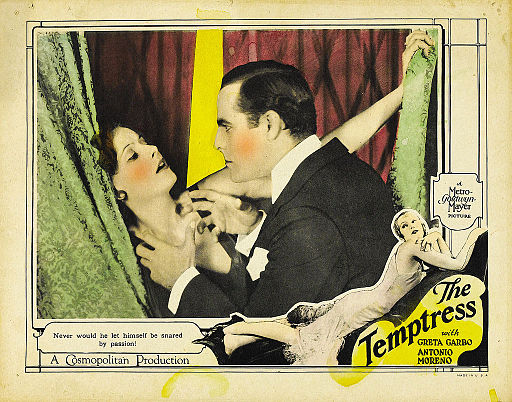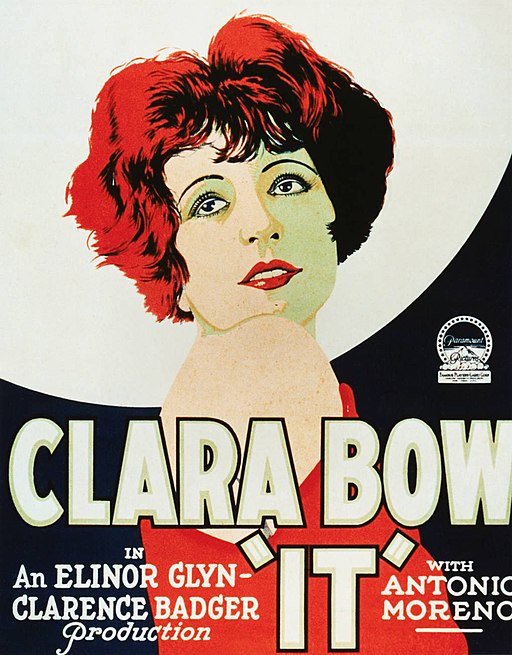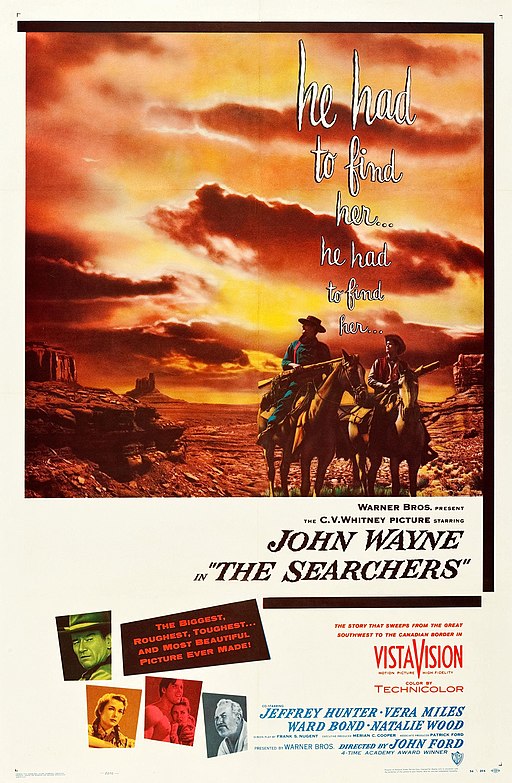Antonio Moreno
back| Full Name | Antonio Garrido Monteagudo Moreno |
| Stage Name | Antonio Moreno |
| Born | September 26, 1887 |
| Birthplace | Madrid, Spain |
| Died | February 15, 1967 |
| Buried | Forest Lawn Memorial Park, Glendale, California, USA |
| Married to | Daisy Canfield Danziger (m. 1923–1933, her death) |
| Children | Moreno had no biological children, but he was a stepfather to Daisy's two children from her previous marriage. |
| Notable films | The Temptress (1926) - Mare Nostrum (1926) - It (1927) - The Searchers (1956) |
Antonio Moreno
The "Latin Lover" of Silent Cinema
Antonio Moreno (1887-1967) was a Spanish-born actor who became a Hollywood heartthrob in the silent film era. With dashing good looks and emotive expressiveness, Moreno starred alongside legends like Greta Garbo and Clara Bow. Notable for his roles in "The Temptress" (1926) and "It" (1927), he transitioned successfully into talkies, showcasing his versatility.
Married to socialite Daisy Canfield Danziger, his personal life mirrored his on-screen charisma. Despite the shift in stardom with the advent of sound films, Moreno embraced character roles, leaving a legacy in classics such as John Ford's "The Searchers" (1956).
Related
Antonio Moreno (1887 – 1967)
Biography and Career Analysis:
Antonio Moreno was born in Madrid, Spain, and moved to the United States in his teens. Settling initially in Massachusetts, he eventually made his way to New York City, where he pursued acting, first on stage and then in silent films. Moreno's good looks and acting talent caught the attention of Hollywood, and by the 1910s, he had become a popular leading man.
Moreno's career flourished during the silent film era. He was often cast as the romantic lead and worked alongside some of the biggest stars of the time, including Greta Garbo in "The Temptress" and Clara Bow in "It." His ability to transition into talking pictures was successful, though he found more substantial roles in character parts and supporting roles as the industry evolved.
In 1923, Moreno married Daisy Canfield Danziger, a wealthy socialite and philanthropist. The couple was well-known in the social circles of Los Angeles, and their marriage was a significant event of the era. They resided in the lavish mansion known as the Canfield-Moreno Estate in the Silver Lake area of Los Angeles. Unfortunately, Daisy died in a car accident in 1933, a tragic event that deeply affected Moreno.
After Daisy's death, Moreno continued his acting career but also turned his attention to real estate and business. While he never regained the leading man status of his early years, he remained a respected actor until his retirement from the screen.
Antonio Moreno's contribution to the film industry was significant, with a career that spanned silent films to talkies and included both leading and supporting roles. He passed away in 1967 and was laid to rest in Forest Lawn Memorial Park in Glendale, California, leaving behind a legacy that reflects the early years of Hollywood and the transition from silent to sound cinema.
Video Tribute to Antonio Moreno:
Notable Movies with Antonio Moreno:
Silent Era Highlights
- 1914: "The Bridge of Sighs"
Moreno plays a lead role in this early silent film, which is a drama centered around romance and betrayal in Venice.
- 1920: "The Veiled Mystery"
A suspenseful adventure where Moreno's character uncovers an ancient treasure and a family secret.
- 1926: "Mare Nostrum"
Moreno stars as a Spanish sea captain who is seduced by a German spy during World War I. The film explores themes of love, espionage, and tragedy.
- 1926: "The Temptress"
Co-starring with Greta Garbo, Moreno plays a man torn between love and honor, showcasing his ability to convey deep emotions without words.
- 1927: "It"
Featuring alongside Clara Bow in what would become one of the defining films of the silent era, Moreno plays the wealthy love interest in this romantic comedy that popularized the concept of the "It girl."
Transition to Sound and Later Career
- 1931: "The Cisco Kid"
In one of his early sound films, Moreno takes on the role of a charismatic bandit in this Western, which showcases his versatility as an actor.
- 1943: "Phantom of the Opera"
In a supporting role, Moreno contributes to the atmosphere of this classic horror film, starring alongside Claude Rains.
- 1955: "Seven Cities of Gold"
Moreno plays a supporting role in this historical drama about Spanish explorers in California, reflecting his transition to character roles in the later stages of his career.
- 1956: "The Searchers"
Directed by John Ford and starring John Wayne, Moreno has a small but memorable role in this iconic Western, which is considered one of the greatest films of the genre.
Final Years
- 1960: "This Rebel Breed"
One of Moreno's final films, this drama focuses on racial tensions in a high school, with Moreno playing a supporting role as a concerned parent.
Analysis of the Acting Style of Antonio Moreno:
Antonio Moreno's acting style, like that of many of his contemporaries who transitioned from the silent era to talkies, was characterized by a blend of nuanced physicality and an emerging vocal expressiveness that adapted to the evolving demands of cinematic storytelling.
Physical Expressiveness in the Silent Era
In the silent film era, Moreno's acting was marked by a compelling physical expressiveness, a necessity when dialogue could not be heard. His performances were infused with a dynamic range of facial expressions and body language, enabling him to convey complex emotions and narrative subtleties without words. Moreno's handsome features and intense gaze often communicated his characters' inner thoughts and feelings, from romantic longing to moral conflict, with a subtlety that invited audience empathy.
His posture and movement were also crucial elements of his silent film acting style. Moreno could portray nobility or vulnerability through his carriage alone, using stance and gesture to add depth to the archetypical roles of the era, such as the romantic hero or the brooding outsider. This physical storytelling was a hallmark of his early career, making him a compelling screen presence and a heartthrob of his time.
Transition to Sound: Vocal Adaptation and Emotional Nuance
With the advent of sound in cinema, Moreno smoothly transitioned into roles that utilized his voice, adapting his acting style to include vocal expressiveness without losing the physicality that defined his silent film performances. His voice added a new layer to his performances, enabling him to convey emotion and intention with greater specificity and to interact with dialogue in ways that silent cinema could not accommodate.
Moreno's vocal delivery was often characterized by a warm timbre and clear diction, which complemented his on-screen persona. He adjusted his performance intensity to match the closer, more intimate framing of sound films, where subtler expressions and quieter, more nuanced line deliveries became effective. This transition demonstrated his versatility and understanding of the medium's evolving nature.
Character Depth and Later Roles
In his later career, Moreno's roles often required a more character-driven approach, showcasing his ability to imbue supporting roles with depth and complexity. He adeptly portrayed a wide range of characters, from sophisticated gentlemen to rugged adventurers, leveraging both his physical expressiveness and vocal nuances to bring these characters to life. His ability to adapt his acting style to the changing times and types of roles is a testament to his craftsmanship and professionalism.
Legacy
Antonio Moreno's acting style reflects the transition in cinematic history from the silent era's visual storytelling to the sound era's blend of visual and auditory performance. His work exemplifies the adaptability and range that allowed some actors of his generation to continue working successfully as cinema evolved. Moreno's legacy in film acting is one of emotional depth conveyed through a balanced fusion of physical and vocal expression, marking him as a versatile and memorable presence in early Hollywood.
Awards and Recognition:
During Moreno's peak years, the film industry's recognition mechanisms were different, focusing more on box office success and studio promotion rather than the plethora of awards ceremonies we have today. That said, it's important to acknowledge Moreno's contributions to the film industry through the legacy and influence of his work, which earned him a place in cinematic history, even if specific awards and nominations might not be well-documented.
It is also worth noting that while specific individual accolades may not be readily attributed to Moreno, he participated in many significant films that received critical acclaim and industry recognition in their time. Films like "The Temptress" (1926) with Greta Garbo and "The Searchers" (1956) are considered classics today and contributed to the lasting legacy of those involved, including Moreno.
Overview of Important Movies with Antonio Moreno:
Silent Films Era
- The Call of the North (1914)
- Rose of the Rancho (1914)
- The Bridge of Sighs (1915)
- The Secret Game (1917)
- A Daughter of the Old South (1918)
- The Veiled Adventure (1919)
- The Invisible Fear (1921)
- The Spanish Jade (1922)
- Mare Nostrum (1926)
- The Temptress (1926)
- It (1927)
Transition to Sound
- The Cisco Kid (1931)
- Santa (1932) - Noteworthy as one of the first Mexican sound films.
- Jungle Menace (1937)
1940s and Beyond
- Phantom of the Opera (1943)
- Tahiti Nights (1944)
- The Girl from Monterrey (1943)
- South of the Rio Grande (1945)
- The Fabulous Texan (1947)
Later Career Highlights
- Border Incident (1949)
- Kim (1950)
- The Mark of the Renegade (1951)
- Seven Cities of Gold (1955)
- The Searchers (1956)
- Around the World in 80 Days (1956) - Uncredited role.
- This Rebel Breed (1960)

